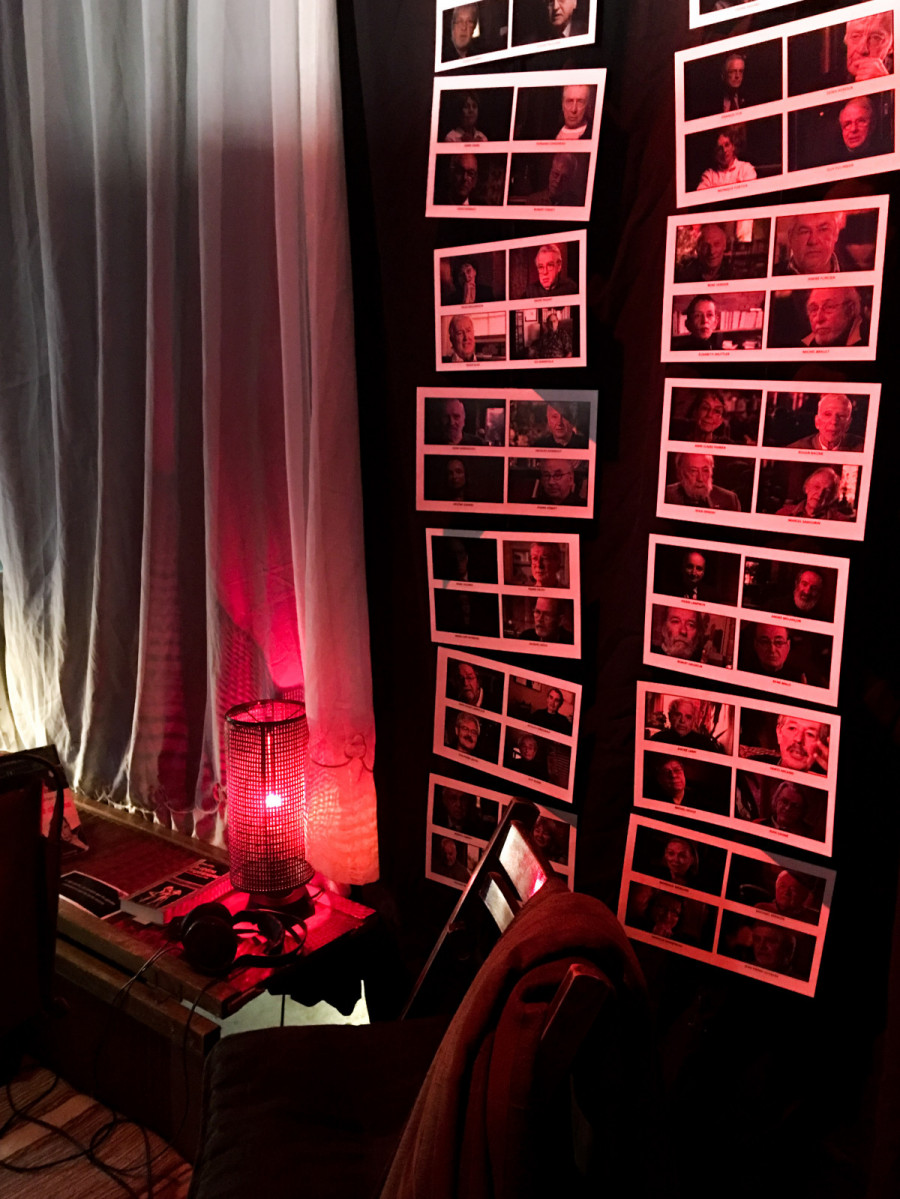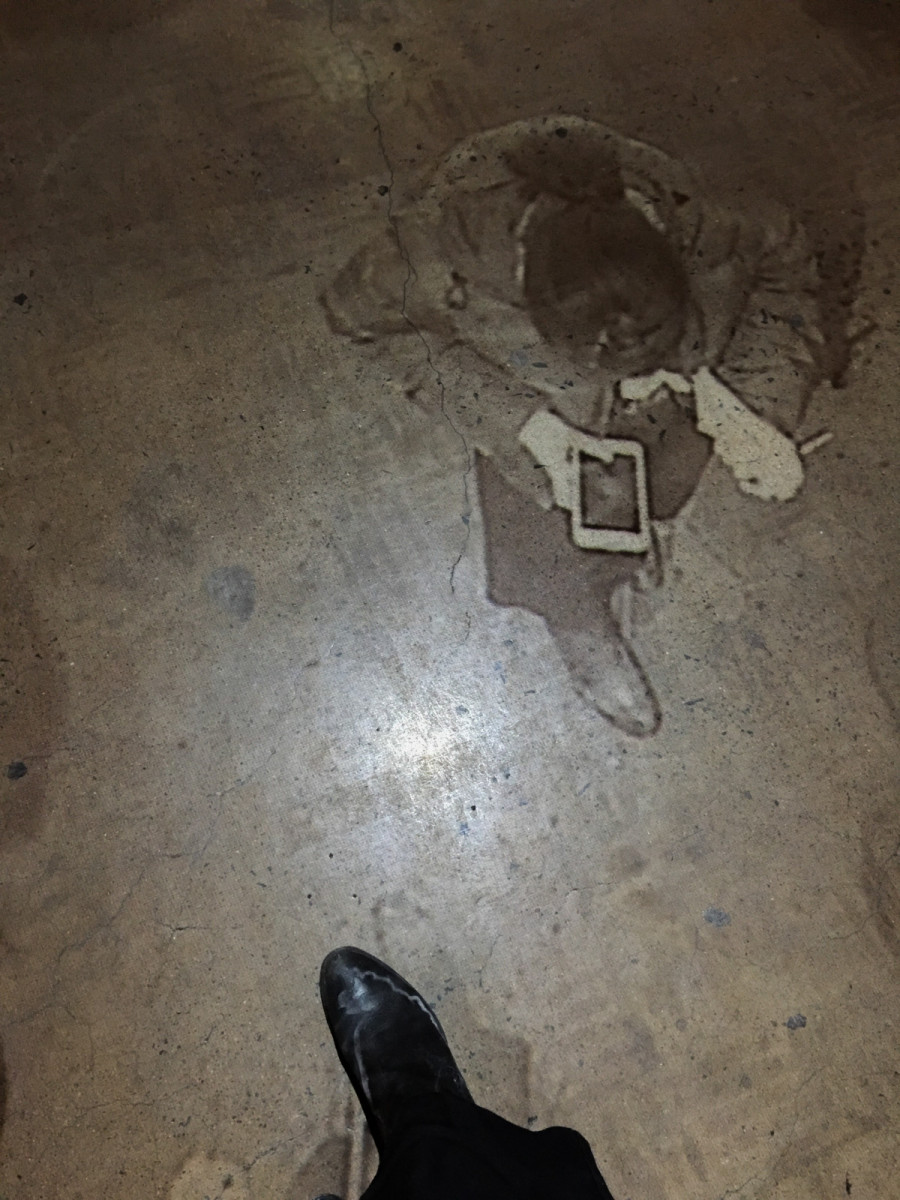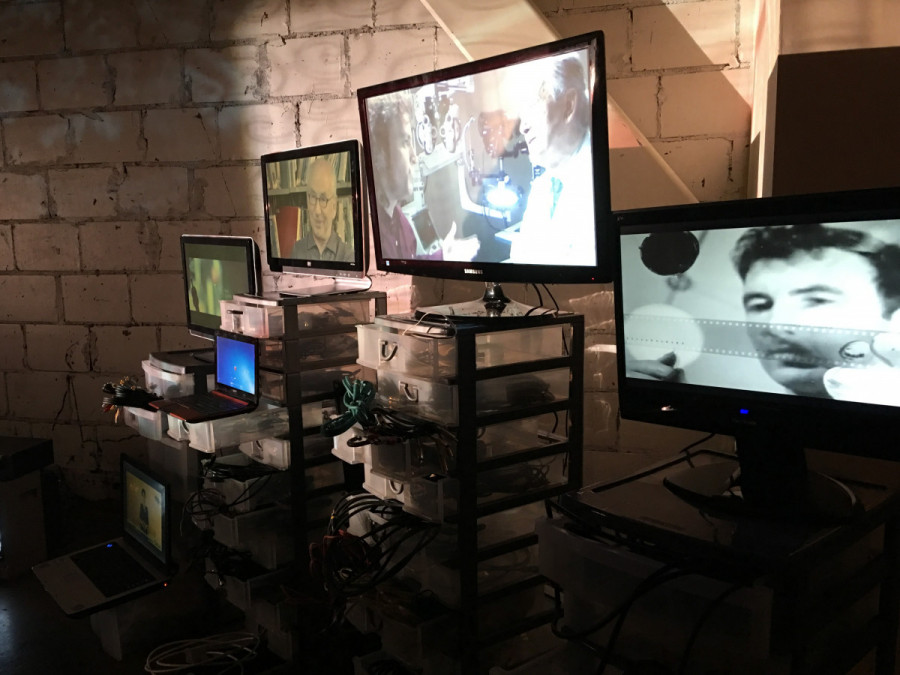Quebec Filmmaker Denys Desjardins Explores the Depths of Memory
A Trail Documents a Lifetime of Experience, Blending Old-Fashioned and Modern Technology
Computers were first introduced at the Polyvalente Lucien-Pagé when Denys Desjardins was in tenth grade, young and eager to unlock a whole wide world of the unknown.
“I had even stolen the school key to go to the computers,” he said, explaining that the school’s few computers were locked away, only accessible to his teacher.
“I tried the passwords and I got into the teacher’s account,” he said. The password? The teacher’s wife’s name.
Desjardins gained access to the network and was able to communicate with other schools.
“I fell in love with computers,” said Desjardins. The trickling effect of this introduction propelled his career as a filmmaker.
Inspired by many who came before him, such as Chris Marker and Robert Daudelin, Desjardins developed a fascination with memory, the central theme of his one-night exhibition. On Nov. 28, the Société des arts technologiques hosted Denys Desjardins s’expose à la SAT.

The exhibition was divided into several rooms, each presenting different projects with devices representative of each generation.
A pathway guided the visitors through the rooms, where memories unravelled through photographs, videos, documentaries, and audio elements.
Related- Finding Sound in the Silence at the South Asian Film Festival
- The South Asian Film Festival Pulls at Your Heartstrings
A photo album was laid open on a table in a space arranged like a living room, and a shabby couch invited the audience to sit and shuffle through the songs on an orange iPod.
A vintage Sawyers projector showed pictures of a woman’s travels on a white screen.
Photographs documenting the beginnings of cinema with photos of historical figures were hung with clothespins on a curtain wall.
Quotes accompanied the pictures. One of them, by Federico Fellini, read: “Il n’y a pas de frontière entre l’imaginaire et le réel.”
“Reality is limited by a frame—in a theatre, the frame of cinema. It’s what we witness, and the imaginary is what we don’t see but that is there anyways in real life,” said Desjardins, interpreting the quote of the Italian film director.
“Television has gotten us used to this, to limiting ourselves to the frame. Literature has taught us to work imaginatively, where limits do not exist,” he continued.
Anik Salas, a communications agent for the exhibition, said the idea came from Desjardins’s website, launched last August, which simulates the navigational complexities of the mind and memory.
“Reality is limited by a frame—in a theatre, the frame of cinema. It’s what we witness, and the imaginary is what we don’t see but that is there anyways in real life.” — Denys Desjardins
“We really wanted to take it further, talk about the memory and explore it,” she said, explaining that the exhibition offered a tangible concept of memory to the audience.
“My father used to film with a little 8-mm camera, and the films he left, they’re memories from his viewpoint,” said Desjardins.
When Desjardins was a student in Concordia’s film studies program, the place that marked his beginning in professional cinema, he worked with 16-mm cameras.
Throughout his career, Desjardins directed and designed websites for the private sector and the National Film Board of Canada.
RelatedWith technological advances and the continued development of the internet, however, the task has become more intricate.
Now it requires an entire team, explained Desjardins. He can control the interface and the creative side of things, but the back end is controlled by companies, unlike before.
Monique Savoie, founder and artistic director of the SAT, explained that the NFB and the SAT share a laboratory function, giving artists a space to experiment. She said there is an interesting continuity between the two organizations.
“I think it is very relevant to talk about memory today because we live with technology, so we are always talking about memory,” said Savoie.

As Desjardins evolved and integrated new technologies into his work, he still kept the old devices and methods, creating a blend of past and present.
“The problem with digital is that we don’t touch anything anymore,” he said.
“When you look at pictures from an iPhone, it’s the iPhone that illuminates you. They call that ‘retro eclairé’; that’s not projection. I myself love projection—it’s magic for me.”
Remember the projections of a woman’s travels? She was a friend of Desjardins’s mother.
One day, his mother brought home a box full of the friend’s old films, which documented her travels in her youth.
Now, the friend had lost her memory and couldn’t remember visiting Singapore, among other cities and countries.
Fascinated, Desjardins visited the woman and told her about her own travels across the world.
“It would be interesting to know: Did she lose her memory, or did she give it to me?”


